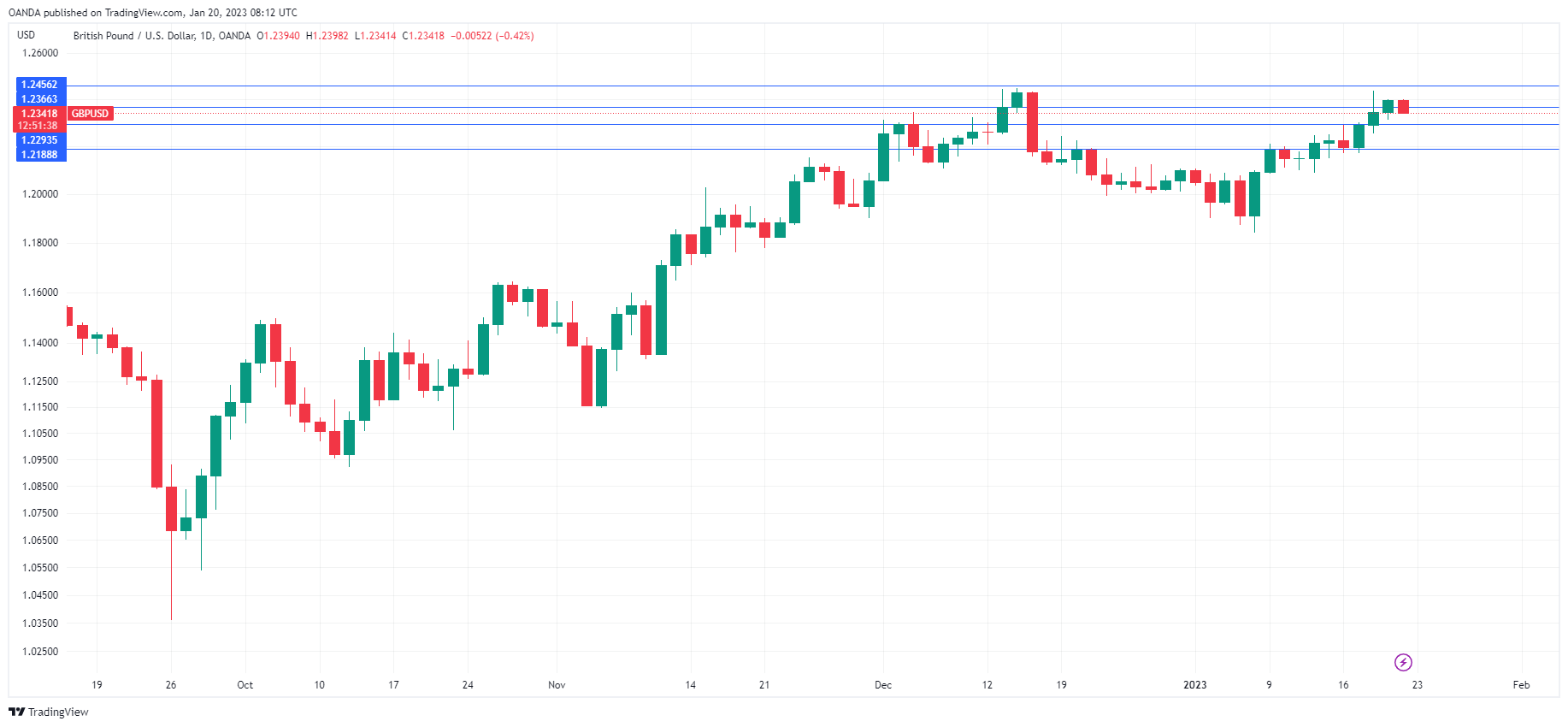The British pound edged lower on Friday. In the European session, GBP/USD is trading at 1.2360, down 0.27%.
Retail sales fall sharply
UK retail sales were dismal in December. The headline figure fell -1.0% m/m, missing the forecast of 0.5% and below the November read of -0.5%. The core rate declined by 1.1%, shy of the forecast of 0.4% and below the November reading of -0.3%. On an annualized basis, the numbers were downright ugly – headline retail sales came in at -5.8% and the core rate at -6.1%, which was worse than November and below the estimates.
Any hopes for a surge in spending due to Christmas were dashed, as consumers cut back due to the cost-of-living crisis. Inflation has eased a bit but remains in double digits, and consumers are expected to hold tight to the purse strings, as food and energy prices remain high and wages have been eroded by inflation. Consumer confidence remains in deep freeze, with GfK Consumer Confidence falling to -45 in December, down from -42 in November and shy of the consensus of -40.
Weak consumer spending and confidence points to a struggling economy, but the Bank of England has little choice but to continue raising rates in order to curb inflation. This will be a slow process, with the BoE projecting that inflation will fall to 5% late in the year.
The Federal Reserve enters a 2-week blackout period after today, ahead of the rate meeting on February 1st. This means that public comments or interviews from Fed officials will be sharply curtailed. This made Fed member Brainard’s comments on Thursday all the more important. Brainard sounded hawkish, saying that rates needed to remain high even with signs that inflation was starting to ease. The Fed dot plot indicates that rates will peak at 5.1%, while the markets have priced a peak at around 4.75%. We’ll hear from Fed members Harker and Waller later today.
GBP/USD Technical

- 1.2352 is a weak resistance line, followed by 1.2455
- There is support at 1.2255 and 1.2179
